My first build !
Im new to reef keeping but grew up with my dad keeping a 150 gal for many years.
I was given a biocube 14 for free and decided to jump in and give reef keeping a try!
Id like this build log to be somewhat of an online journal of sorts to be a history of the tanks life and evolution.
My tank is now 3.5 weeks old.
Live sand, dry rock, and API Quickstart was added 10/02/22.
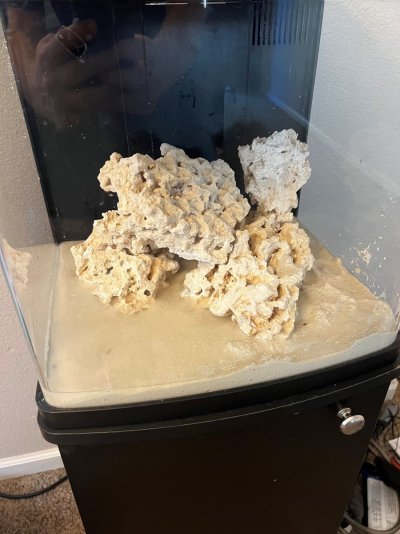
A few days later my ammonia and nitrite were at 0ppm and Nitrate was about 10 ppm. Figured I was ready to add a single clown and hope the tank continued to cycle. At this same time (On advice from my LFS) I also added two blue legged hermits, a scarlet hermit, a trochus snail and a nassarius snail. About a week later the trochus snail died and i removed quickly to avoid an ammonia spike. I believe the snail didn't have enough food as there wasn't really any algae at this point. The other CUC seemed to be doing fine though.
At this point, I wasn't very happy with how hot the lighting was so i opted to remove the stock lights from the Biocube and retrofit a Fuval Nano into the lid of the biocube.
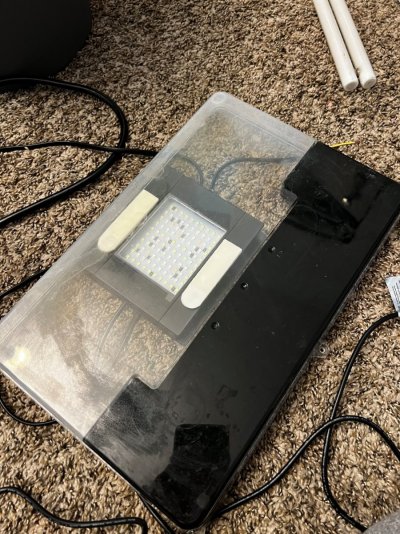
Check out my short DIY thread on how that took place.
Fast forward a few weeks and I decided to try adding some corals, a local reef keeper sold me a few great pieces of GSP for $10. Within 24hrs it was open and looking awesome!
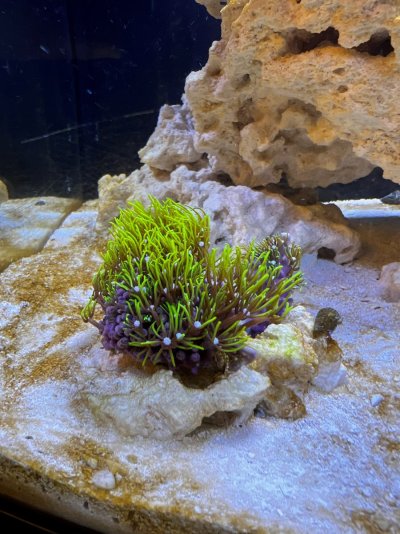
(Note the brown that i suspect is Diatoms, all gone as of 10/27/22)
This boosted my confidence and so i took advantage of a weekend sale at the LFS and got three frags for $23:
A "Wam-N-Watermelon" Zoanthid (Yellow and Pink 13 polyps)
A "Ruby Rain" Zoanthid (Blue and Orange ~22 polyps)
A "Candy Apple" palythoa (Green and Red)
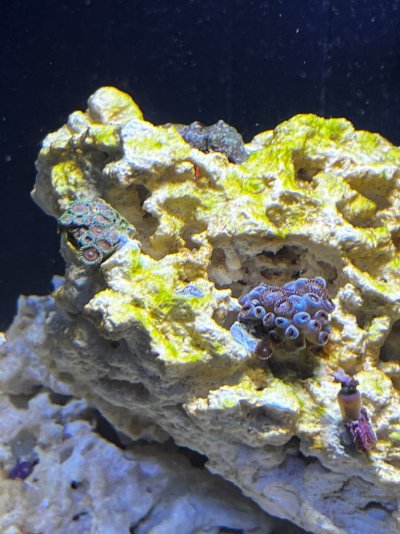
Right after feeding the corals some frozen food. Still working on getting better pictures with my iphone.
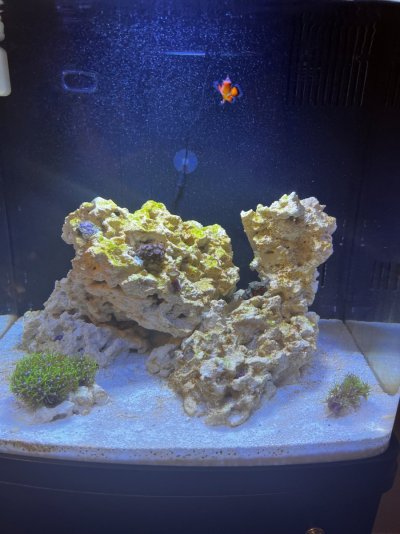
Full view of the front of the tank with the softies all opened up.
Tank is doing well, Ammonia and nitrite are now down to 0 after hovering around 0.5ppm for a week and a half.
I'm looking to add another fish either this weekend or sometime next week. Probably a yellow clown Goby or royal gamma.
I love to come home from work and check out whats going on in my little bit of ocean.
Ive seen at least one brittle star baby hitchhiker and a couple bristle worms and maybe an Asterina start with only three legs.
Seems like even at only a few weeks in there is so much life !
Next time I update ill have some more tank mates to share !
Im new to reef keeping but grew up with my dad keeping a 150 gal for many years.
I was given a biocube 14 for free and decided to jump in and give reef keeping a try!
Id like this build log to be somewhat of an online journal of sorts to be a history of the tanks life and evolution.
My tank is now 3.5 weeks old.
Live sand, dry rock, and API Quickstart was added 10/02/22.

A few days later my ammonia and nitrite were at 0ppm and Nitrate was about 10 ppm. Figured I was ready to add a single clown and hope the tank continued to cycle. At this same time (On advice from my LFS) I also added two blue legged hermits, a scarlet hermit, a trochus snail and a nassarius snail. About a week later the trochus snail died and i removed quickly to avoid an ammonia spike. I believe the snail didn't have enough food as there wasn't really any algae at this point. The other CUC seemed to be doing fine though.
At this point, I wasn't very happy with how hot the lighting was so i opted to remove the stock lights from the Biocube and retrofit a Fuval Nano into the lid of the biocube.

Check out my short DIY thread on how that took place.
Fast forward a few weeks and I decided to try adding some corals, a local reef keeper sold me a few great pieces of GSP for $10. Within 24hrs it was open and looking awesome!

(Note the brown that i suspect is Diatoms, all gone as of 10/27/22)
This boosted my confidence and so i took advantage of a weekend sale at the LFS and got three frags for $23:
A "Wam-N-Watermelon" Zoanthid (Yellow and Pink 13 polyps)
A "Ruby Rain" Zoanthid (Blue and Orange ~22 polyps)
A "Candy Apple" palythoa (Green and Red)

Right after feeding the corals some frozen food. Still working on getting better pictures with my iphone.

Full view of the front of the tank with the softies all opened up.
Tank is doing well, Ammonia and nitrite are now down to 0 after hovering around 0.5ppm for a week and a half.
I'm looking to add another fish either this weekend or sometime next week. Probably a yellow clown Goby or royal gamma.
I love to come home from work and check out whats going on in my little bit of ocean.
Ive seen at least one brittle star baby hitchhiker and a couple bristle worms and maybe an Asterina start with only three legs.
Seems like even at only a few weeks in there is so much life !
Next time I update ill have some more tank mates to share !














